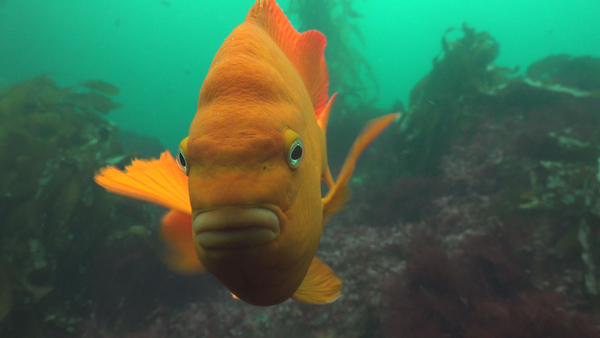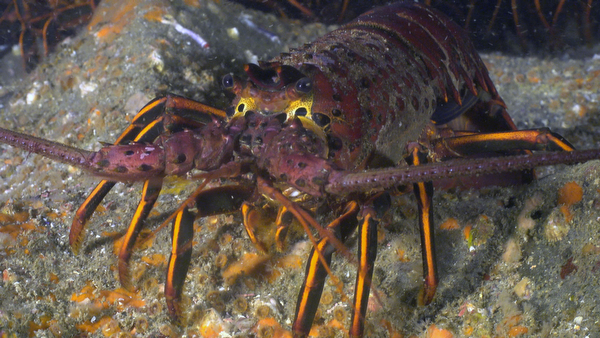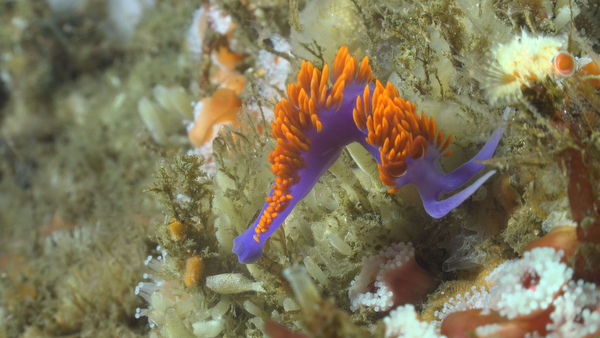Gates’s John Ellerbrock on the Sony AX100

The owner of Gates Underwater Products, John Ellerbrock, has sent us the following personal thoughts regarding a day he spent diving and testing the Sony FDR AX100 4K camcorder in one of his company’s housings.
Press release
1-1-2-1: Gates AX100 Underwater Test
1-1-2-1 is a compilation of clips from a single day of diving off Point Loma, San Diego. It demonstrates the Gates AX100 housing / Sony FDR-AX100 camera capabilities with a single GP34 Wide Angle port and a pair of Sola LED lights. This system is a compact performer –travel easy, optically versatile, and a proper motion imaging tool. 1-1-2-1 is the proof.
For full size frame grabs from the camera, please see the Gates website

Comments:
As Shot. All clips in 1-1-2-1 are ‘As Shot’ to evaluate the camera capabilities without post corrections or grading.
Conditions. Typical San Diego green water. Light surge. Visibility ~ 30 ft / 10 m.
Camera / Housing setup:
Because we have surge and sometimes current here in San Diego, I chose some practical settings:
* Auto Focus. While I prefer manual focus (especially with large sensors), I let the camera focus all shots. Trying to focus in surge conditions is difficult at best. But I also wanted to test the auto focus tracking capabilities of the AX100 camera.
* Exposure control plan. Exposure control is available as shutter, gain and iris. My approach:
* Shutter: 1/30 to match the frame rate.
* Gain: automatic. The AX100 is ostensibly a low light camera, so I wanted to test this by letting gain float to hold proper exposure.
* Iris: adjusted by me to the highest f-stop possible without pushing gain too far. I tried to keep gain under 21dB (an arbitrary choice).
* Resolution / Frame rate: 3840 x 2160 / 30P.
* Peaking: Yellow color, low setting.
* White Balance: Auto and manual, for test comparison.
* Color Filter: On and off, also for test comparison.
* GP34 Wide Angle Port. I selected this for versatility. 90% zoom through from 100° to macro.
Conclusions:
UHD. Watching this video on a 75” UHD Samsung display is amazing for the detail and sharpness. Truly, if you’ve not seen underwater in 4K, prepare to be blown away.

Critical Focus. UHD also brings into sharp relief the need for critical focus. What looks good in HD can be distractingly poor in UHD. The Kelp Bass, for example looks great in HD, but on a UHDTV he’s slightly out of focus. So…using focus tools like peaking and magnify are necessary for consistently sharp UHD images.
Dynamic range. The AX100 handled the brilliant orange Garibaldi on a dark background quite well. Better than I expected.
Auto focus works perfectly – about 70% of the time. Sometimes the camera wants to focus on something other than your subject.
Peaking. This is why peaking is helpful. It shows which parts of the image are in precise focus. If I were manually focusing, this feature would be invaluable. It’s notable that the AX100 has three levels of peaking, and three colors red/yellow/blue.
White balance – After a few test shots on the first dive, it became obvious that the AX100 was handling color just fine. So I let it be for the remainder of the dives. The internal color filter was not needed for these conditions (but I expect it will be important in tropical waters)
Low light. Despite high levels of gain (15-21 dB and sometimes more) this did not seem to affect image quality. This is very promising for more challenging low light conditions ahead.
Iris / Gain / Shutter. Diving these conditions again I would keep the same exposure plan, but would only change shutter speed. 1/30 led to motion blur, which I don’t like. Next time I’ll shoot 1/60 which should clean up some otherwise blurry moving fish.
GP34 Port. 90% zoom through is clear the entire range. 100° at wide + macro. Proof is in the frame grabs. This port is sharp and versatile.
Comments are welcome. I challenge anyone to prove their photo-centric kit is better than the Gates AX100 for a compact and optically versatile motion imaging tool.